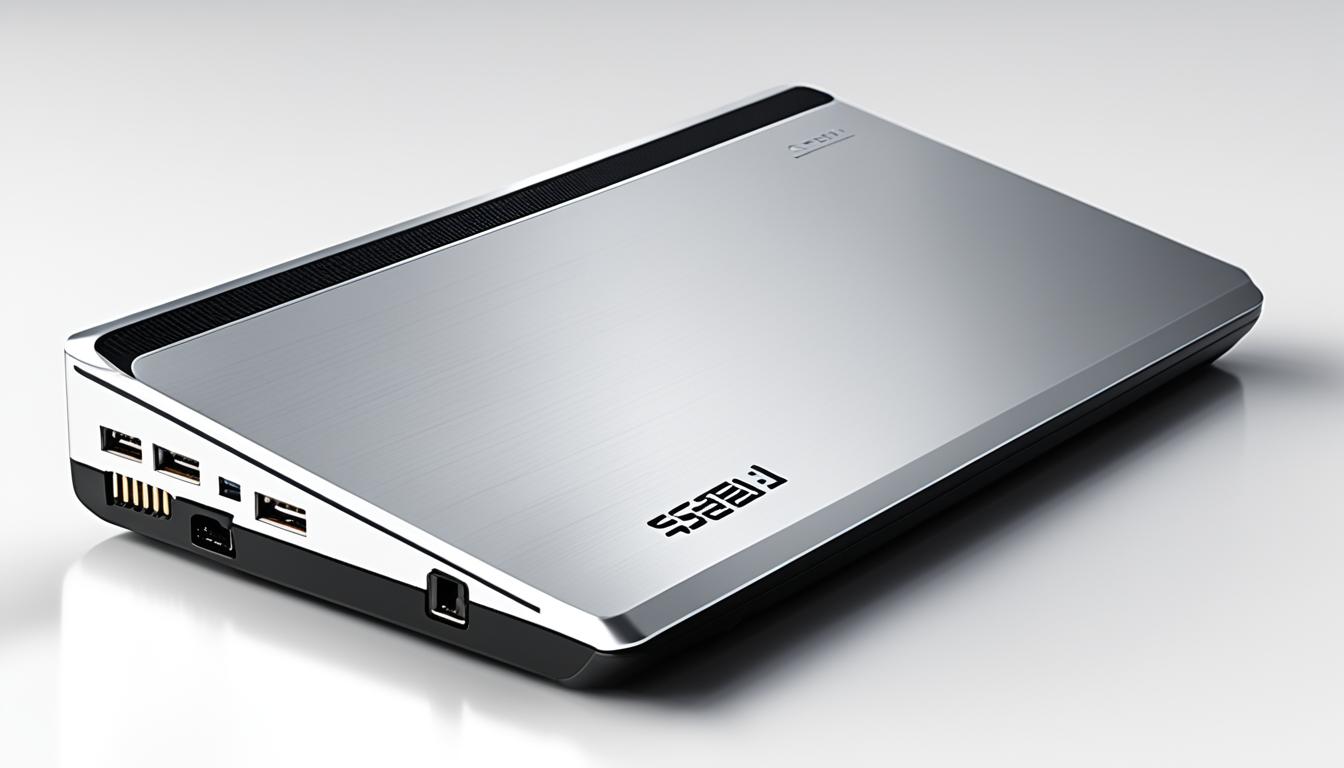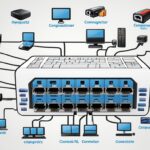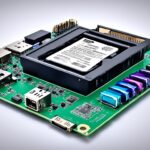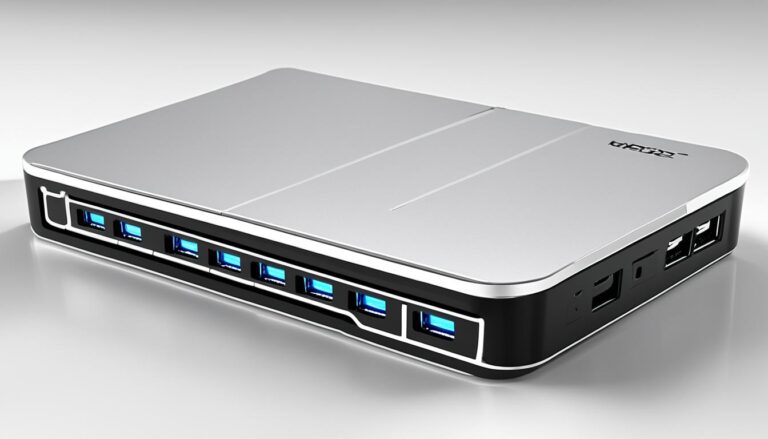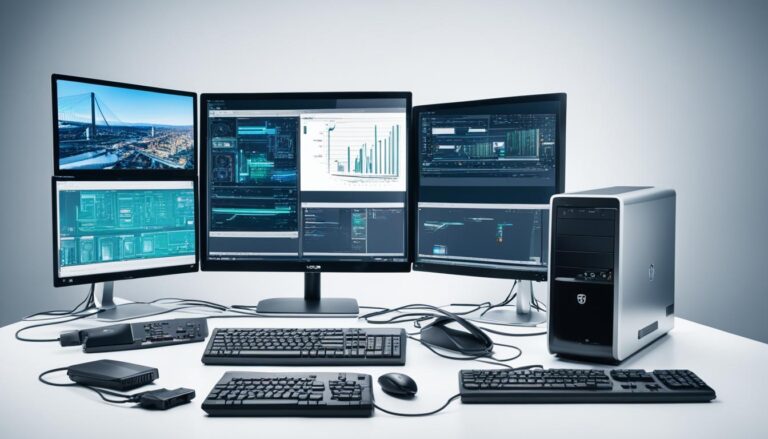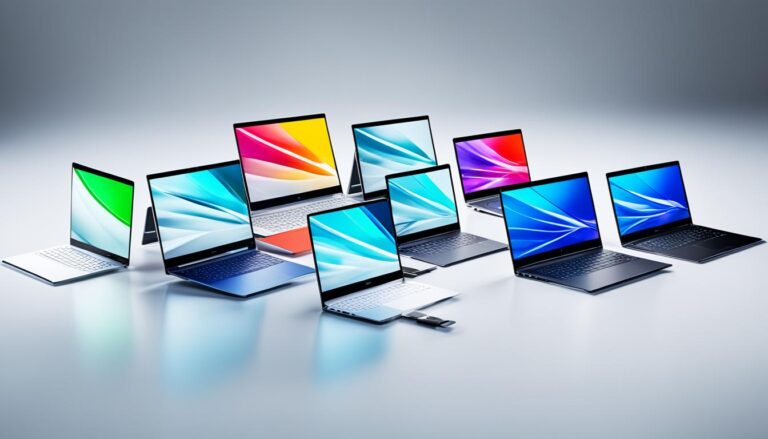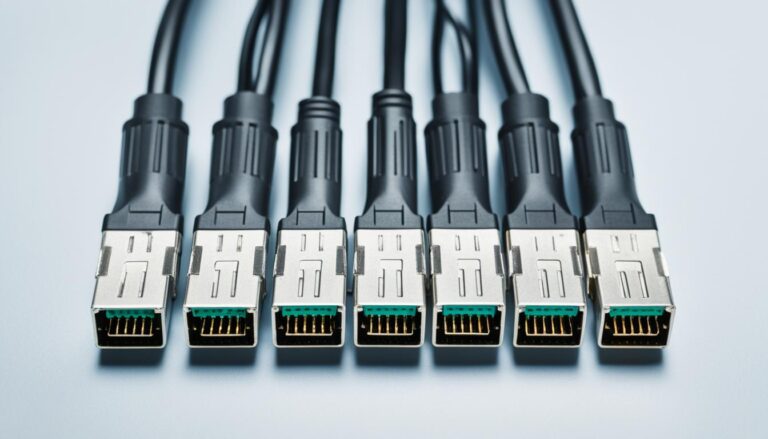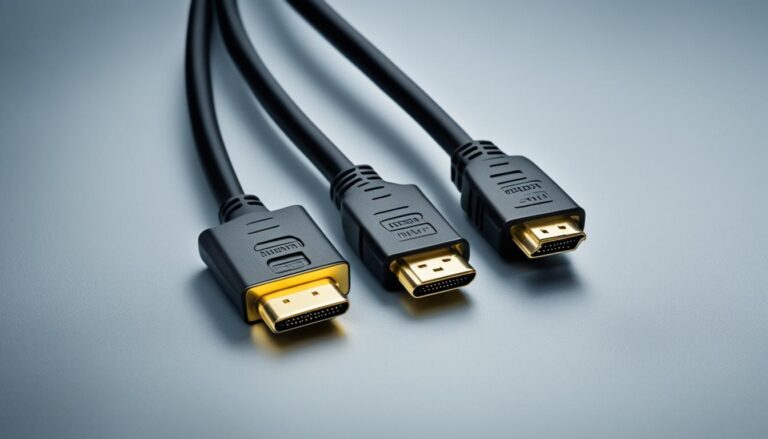A notebook computer, also known as a laptop, is both portable and convenient. It’s easy to carry and use almost anywhere. They are much lighter and smaller than desktop computers, usually weighing less than 5 pounds.
One important feature of these laptops is their serial port, often a USB. This port lets you connect devices like mice, memory sticks, and more. Having a serial port means easier connectivity for businesses.
It allows secure and reliable connections for older devices. This means companies can keep using their current equipment without needing extra adaptors. Furthermore, laptops with serial ports work well across different industries. They support the use of old but necessary devices. In short, a serial port makes a notebook more versatile and business-friendly.
Characteristics of a Notebook Computer
Notebook computers, also known as laptops, are different from desktop computers. They might cost more because they are portable. But, notebooks offer flexibility and convenience for those who travel often.
- Design: Notebooks are made to be small and light. They weigh less than 5 pounds and are under 3 inches thick. That makes them great for people who travel.
- Components: A notebook’s heart has several key parts. This includes a built-in CPU, a motherboard, and usually runs on Microsoft Windows. Additionally, they have processors for extras and video, a keyboard, a touchpad for moving the cursor, and storage like a hard drive or SSD. Notebooks also have a battery to keep them running without external power. All these parts work together to make the notebook efficient.
- Display Technology: Notebooks use thin-screen tech, mostly thin film transistor (TFT) screens. This tech provides bright and clear images from different angles. Moreover, many notebooks have high-definition screens. Some even have touch capabilities, making it easy to interact with the screen.
Notebooks have grown to meet the needs of today’s users. They mix portability and power well. With a sleek design and top screen technology, notebooks are a handy choice for those needing convenience but still want good screen quality.
Benefits of Notebooks
Notebooks have big advantages over desktops. Their portability and convenience stand out. They are light and easy to carry around. This makes them perfect for different places. Whether traveling or just moving in the office, they let you take your work anywhere.
Notebooks also boost workplace flexibility. In today’s busy world, being able to work from anywhere is a must. They help you work from home, in the office, or while traveling. During times like the COVID-19 pandemic, this flexibility was key for remote work.
“Notebooks offer the convenience of having your work at your fingertips, no matter where you are.”
Notebooks can also save you money. They might cost more at first than desktops, but save money in the long run. You don’t need many devices for work, just one notebook. This cuts down on hardware costs and upkeep, saving money for the company.
Compared to desktops, notebooks offer more portability, convenience, workplace flexibility, and cost savings. These benefits make notebooks a smart pick for those who value being mobile, productive, and efficient.
Comparison of Key Benefits between Notebooks and Desktop Computers
| Benefits | Notebooks | Desktop Computers |
|---|---|---|
| Portability and Convenience | High | Low |
| Workplace Flexibility | High | Low |
| Cost Savings | High (long-term) | Low |
Notebooks bring many benefits for both personal and professional use. They combine portability, convenience, workplace flexibility, and the chance to save money. This makes notebooks an ideal choice for people and businesses.
Drawbacks of Notebooks
Notebooks have many great points. But, they also have some downsides that you should think about. If you need a portable computer, consider these points.
Limited Advanced Capabilities
Notebooks might lack the power needed for heavy-duty apps. These include advanced graphics or big data tasks. For those relying on such intense software, this is crucial. You should check the software’s needs. Then, ensure the notebook meets those needs.
Cost
Notebooks can sometimes cost more than desktops. This is true for high-end models or extra features. Even though they’re pricier, think about their long-term worth. They offer great mobility. So, if you need productivity and ease on the move, a notebook may still be worth the cost.
Battery Issues
Notebooks are made for use anywhere. But, their battery life may not always keep up. The battery might run low fast, especially if you’re using a lot of power. This is hard for those needing to work away from charging points. Look at the battery details and how you plan to use the notebook.
Size
Notebooks are smaller than desktops but larger than some other devices. While their size makes them easy to carry, it might not suit all uses. For tasks needing big screens or better visuals, this could be a downside. Always check the screen size and quality against your needs.
Even with these issues, notebooks are still a top choice for many. They are portable and flexible. The most important thing is to know what you need. Then, choose a notebook that fits your work or hobby well. This way, you get a good mix of performance, price, and ease of use.
Adding a Serial Port to a Notebook Computer
There are two main ways to add a serial port to a laptop: using a software emulator or a physical adapter. A virtual serial port emulator is one option. Another is a USB-to-serial adapter.
Virtual Serial Port Emulator
A virtual serial port emulator creates virtual COM ports through software. It mimics real RS-232 port settings. This tool is great for connecting devices in labs or workshops. It also helps with testing and debugging for developers.
USB-to-Serial Adapters
A USB-to-serial adapter connects to your computer’s USB port. It offers a straightforward way to add a serial port. Make sure to install the right driver for it to work well.
Many USB-to-serial adapters are for sale, each with unique features. Picking a reliable adapter that matches your system is key for smooth connection.
Benefits of Adding a Serial Port
Adding a serial port improves your laptop’s connectivity. It lets you use older devices and equipment easily. This is great for transferring data, controlling devices, or monitoring them.
A laptop with a serial port suits various fields. Industries like automation, manufacturing, health, and research benefit from it. It’s important for working with old equipment.
Adding a serial port, using either a virtual emulator or USB adapter, can boost your laptop’s use. This upgrade allows you to enjoy more functions and better connectivity.
Conclusion
A notebook computer with a serial port brings many benefits to businesses. It provides a steady connection for older devices. This means companies can keep using their existing gear without needing extra stuff. They save time and money while keeping things running smoothly.
This type of notebook is very flexible for different jobs. It works well in many areas where old devices are still in use. For example, in factories or hospitals, it helps keep things moving without a hitch. It adapts to various settings, making work easier.
Though they may cost more at first and aren’t as advanced as some desktops, their benefits are clear. Being able to work from various places makes employees more flexible and efficient. Plus, connecting with old devices helps businesses use what they already have.
In short, a notebook computer with a serial port is great for business. It improves connections, supports old equipment, and fits many needs. With its helpful features, it’s a smart choice for any company wanting to improve and stay current in the digital age.
FAQ
What is a notebook computer?
A notebook computer is known as a laptop too. It’s portable and handy for use in different places.
How is a notebook computer different from a desktop computer?
Notebook computers are smaller and lighter. They weigh under 5 pounds and are less than 3 inches thick. Unlike desktops, they’re built for easy carrying and have a battery for power.
What are the key characteristics of a notebook computer?
It has a central processing unit, a motherboard, and an operating system. There’s also a keyboard, a touchpad, internal storage, and a battery.
What are the benefits of using a notebook computer?
They bring portability, convenience, and flexibility. Notebook computers let you work anywhere and save the cost of multiple devices.
What are the drawbacks of using a notebook computer?
They might not have advanced features. The cost is often higher at first. You might also face battery issues and find the screen too small.
How can I add a serial port to my notebook computer?
You have two options: a virtual serial port emulator or a USB-to-serial adapter.
What is a virtual serial port emulator?
It’s software that creates virtual COM ports on your laptop. It’s perfect for connecting serial interface equipment in labs.
What is a USB-to-serial adapter?
This is a physical device that connects to your laptop’s USB port. It gives you a serial port connection once the right driver is installed.
